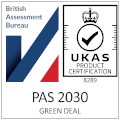Why is Home Ventilation important?
Adequate Ventilation is crucial when improving the energy efficiency of your home because it helps maintain a dry, safe, and healthy home environment. Everyday activities like cooking, bathing, and even breathing produce moisture that, if trapped, can lead to dampness, mould, and damage to your property. Good ventilation ensures this moisture is removed, protecting your home from these risks.
In addition to preventing condensation in winter and keeping rooms cool in summer, proper ventilation improves indoor air quality by preventing stuffiness and removing pollutants, allergens, and excess humidity, creating a more comfortable and breathable space.
Furthermore, effective airflow supports the performance of insulation by preventing moisture build up, which could compromise its efficiency. It also safeguards the structural integrity of your home by reducing the risk of rot, warping or other damage caused by trapped dampness. Proper home ventilation is a key factor in maintaining a healthier, longer-lasting and more energy-efficient home.
What are the main types of ventilation?
DMEV
DMEVs (Decentralised Mechanical Extract Ventilation) are energy-efficient systems that work continuously to remove moist air from areas like bathrooms, kitchens, and utility rooms. Quieter and more effective than regular fans, they help prevent condensation and improve air quality, creating a healthier environment.
Trickle Vents
Trickle Vents are a small openings in windows or doors that allow fresh air to flow into a space without needing to open the window fully. They provide constant, gentle ventilation in otherwise closed rooms, helping to improve air quality and reduce condensation, damp, and stuffiness. Trickle vents are a simple and effective way to maintain airflow while keeping your home secure and energy-efficient.
Door Undercuts
Door undercuts are small gaps at the bottom of internal doors that improve air circulation throughout your home. They help maintain a balanced temperature, control moisture levels and reduce the risk of mould growth. This simple feature supports better airflow, contributing to a healthier and more comfortable indoor environment.




















